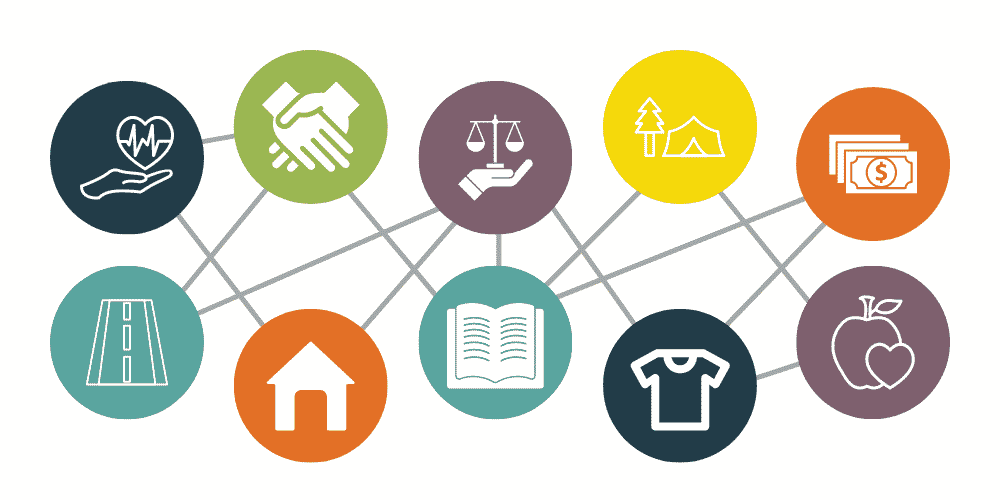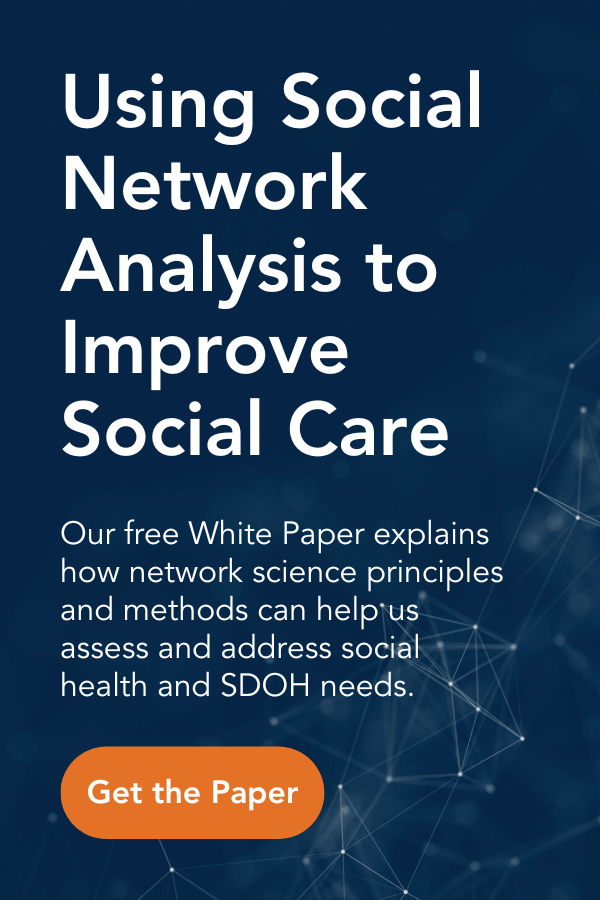
Using a Strength-based Approach for Social Support Screening: 5 Tips for Success
As many clinics and hospitals begin implementing screening programs for the social determinants of health, best practices are being identified and spread from site to site. Many providers have demonstrated the impact of taking a strength-based approach to social need screening and referrals. While SDOH screening typically frames things negatively, with a focus on needs, risks, and disparities, healthcare providers have identified ways to frame the process more positively. While there are many benefits to this strength-based approach, the first and most important is the generation of trust between the patient and provider. Here’s a good overview of the innovation going on today in this area.
Why is a Strength-Based Approach the Best Approach?
Trust is the foundation of any relationship, and that includes between a patient and their doctor, social worker, or another care provider. Approaching a patient with a focus on their strengths instead of their deficiencies is a key way to establish stronger trust and better outcomes. Here are three other benefits of taking a strength-based approach to social determinants of health screening and referrals.
A strength-based approach leads to open and honest conversations and more accurate SDOH information.
When your patient believes you want to help them and have their best intentions in mind, they are more willing to share accurate information. Instead of feeling shame or expecting judgment, a strength-based approach encourages them to identify both the ways they are doing well and areas where they could use more assistance. This makes screening more accurate, and data more valuable for action.
A strength-based approach results in stronger patient engagement and higher referral follow-through.
When it comes to community referrals for social needs, patients are often overwhelmed with a long list of organizations to contact, with a variety of operating hours and intake processes, making follow-through difficult. By identifying the way a patient is already finding help, you can prioritize unmet needs and improves the chance a patient successfully gets help.
A strength-based approach identifies more resources and individuals to engage in supporting the patient.
We all get help from our support network: Family, friends, neighbors, coworkers, and many others help us when we need a hand. A strength-based approach to SDOH screening brings many of these hidden sources of support into the open so you can integrate them into the patient’s care and improve the way they coordinate. This gives the provider another set of tools to respond to new patient needs in the future.

Tips for Taking a Strength-Based Approach in your Social Needs Assessments
There are many ways to take a strength-based approach, with actions on a spectrum from small surface-level changes, to completely integrated frameworks. The most important thing is to get started in the first place: any effort to use a strength-based approach is better than none at all. Here are six tips for establishing such a process in your clinic or organization.
Tip 1: Include patients and caregivers in designing and implementing the program.
The patient perspective is important to consider for both the content and process behind your screening. Consult them as experts as to how questions will be perceived to check your assumptions and ensure the process does not impose inequities or a sense of bias or judgment.
Tip 2: Set realistic patient-centered screening priorities for the clinical environment.
In a fast-paced clinical environment, screening for non-healthcare-related issues often gets less attention than would be ideal. Establishing priority areas for screening ensures that the issues most appropriate to your context are dealt with effectively while leaving patients the opportunity to dive deeper when desired. As you cannot ask about every situation, picking the most important and handling them well is your best strategy.
Tip 3: Screen for both social needs and their existing network sources of support.
Many screening tests and assessments focus primarily on needs and deficiencies, asking patients about their problems and ignoring their strengths entirely. Including questions on social supports and provides a more complete picture for the provider while making it possible to leverage their personal network to improve and coordinate their care.
Tip 4: Acknowledge the ways a patient is already working to support themselves.
With visibility into a patient’s sources of support, you can begin your conversation with patients by acknowledging and honoring the way they are already helping themselves. By framing the conversation from the start in a place of self-resilience, the provider changes the typical narrative, builds trust, and improves patient engagement and involvement.
Tip 5: Train staff and equip them for strength-based conversations and engagement.
Dealing effectively with the social determinants of health requires more than a social service referral. As one of the most trusted professionals in a person’s life, providers have a unique opportunity to engage with a patient and help them identify solutions and supports. The most effective conversations take place using a strength-based approach that acknowledges the historical and system roots of social need and helps build personal resilience. Ensure your staff has the training necessary to make the most of these critical conversations.

How We Take a Strength-Based Approach Using Social Support Mapping at VNL
We have built these best practices into our new SDOH screening too. PARTNERme uses social network analysis methods to map a patient’s social needs and support network, identify gaps, and fill them with targeted community referrals. It allows the provider to enter the room with a complete image of who is supporting the patient, how they are helping, and where they are coordinating care. With this kind of data into a patient’s strengths and existing support, the provider’s task is much easier. Click here to earn more about using a strength-based approach with PARTNERme, a Person-Centered Network Tool.
Taking a Strength-Based Approach to SDOH Issues is Possible!
As you can see there are a lot of things to consider when it comes to social needs assessment. However, the benefits of taking a strength-based approach are numerous and well worth the time and effort. The most important thing is to get started and begin identifying and implementing the little changes that make the most impact. Once you begin having a conversation about strengths and promise instead of just needs and risks, you will be one step closer to a full strength-based approach.
More Resources about Social Determinants of Health Screening & Referrals
Looking for more information about taking a strength-based approach to social determinants screening? Learn more with these helpful resources on the subject, put together by a few of our partner organizations. Have a resource you think we should add to the list? Leave a comment with your suggestion and it might get added during our next article update.
Resource 1: A Strengths-Based Approach to Screening Families for Health-Related Social Needs
Resource 2: Considering Approaches to Screening for Social Determinants of Health
- Resource 3: A Practical Approach to Screening for Social Determinants of Health
- Resource 4: Tools to Assess and Measure Social Determinants of Health

About the Author: Alex Derr, M.P.A.
Director of Marketing & Communications
Alex joined VNL in 2017, originally supporting our events. He now helps manages our communications and marketing strategy and content development work. Alex creates blogs, infographics, reports, and other content while managing our web and social media presence. He also runs our email marketing campaigns, tracks analytics, and conducts market research to drive our strategy. He supports our entire team with copywriting, graphic design and research, and helps with events, webinars, demos, and other online learning. When he isn’t at work Alex spends his time climbing 14ers (30 done, 28 to go!) and blogging on his own website, The Next Summit Blog.
|
|
Thank you for Signing Up |

More Social Care Resources




